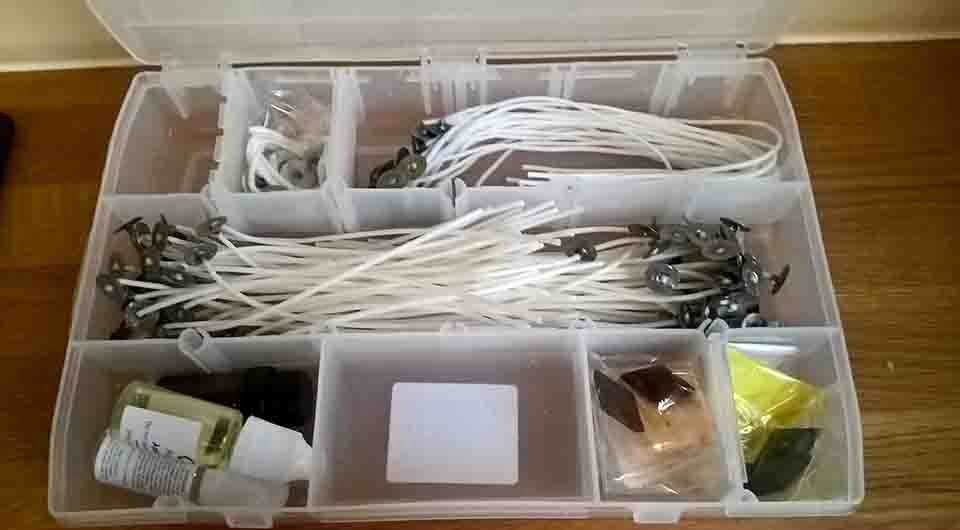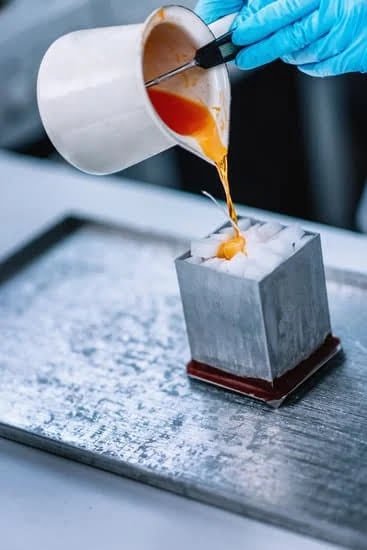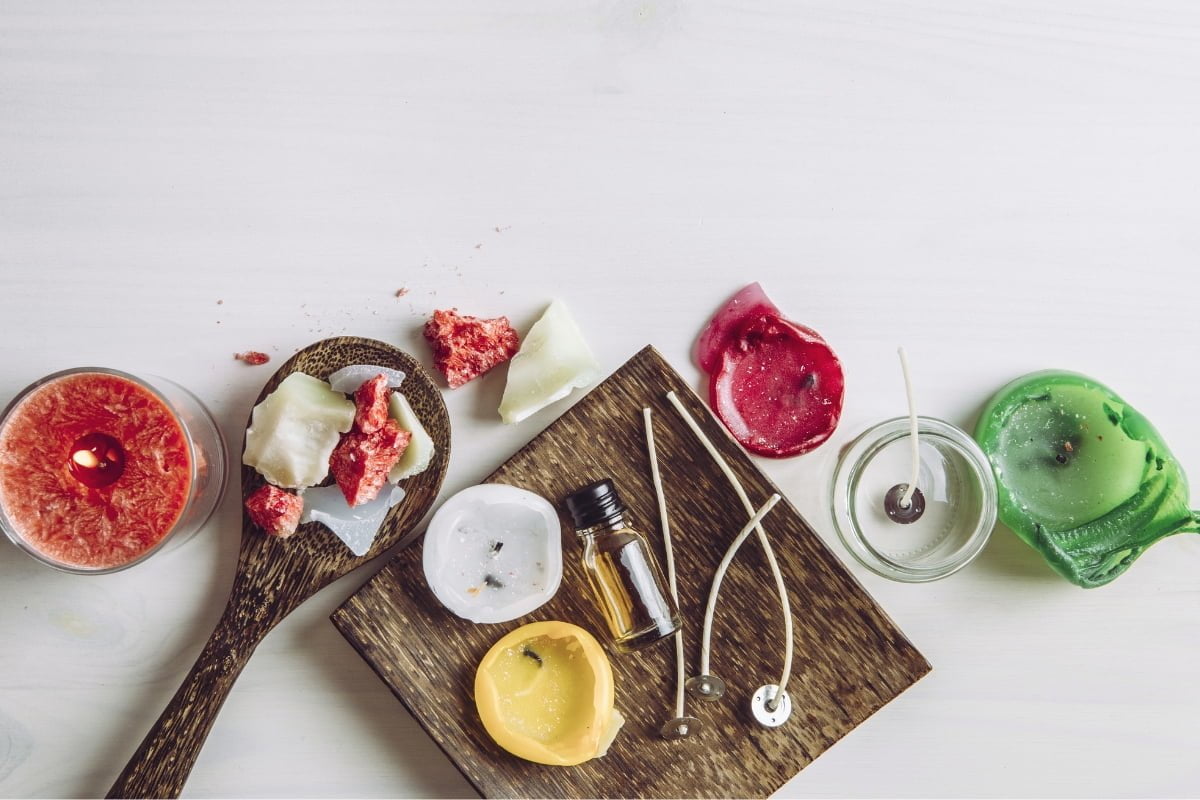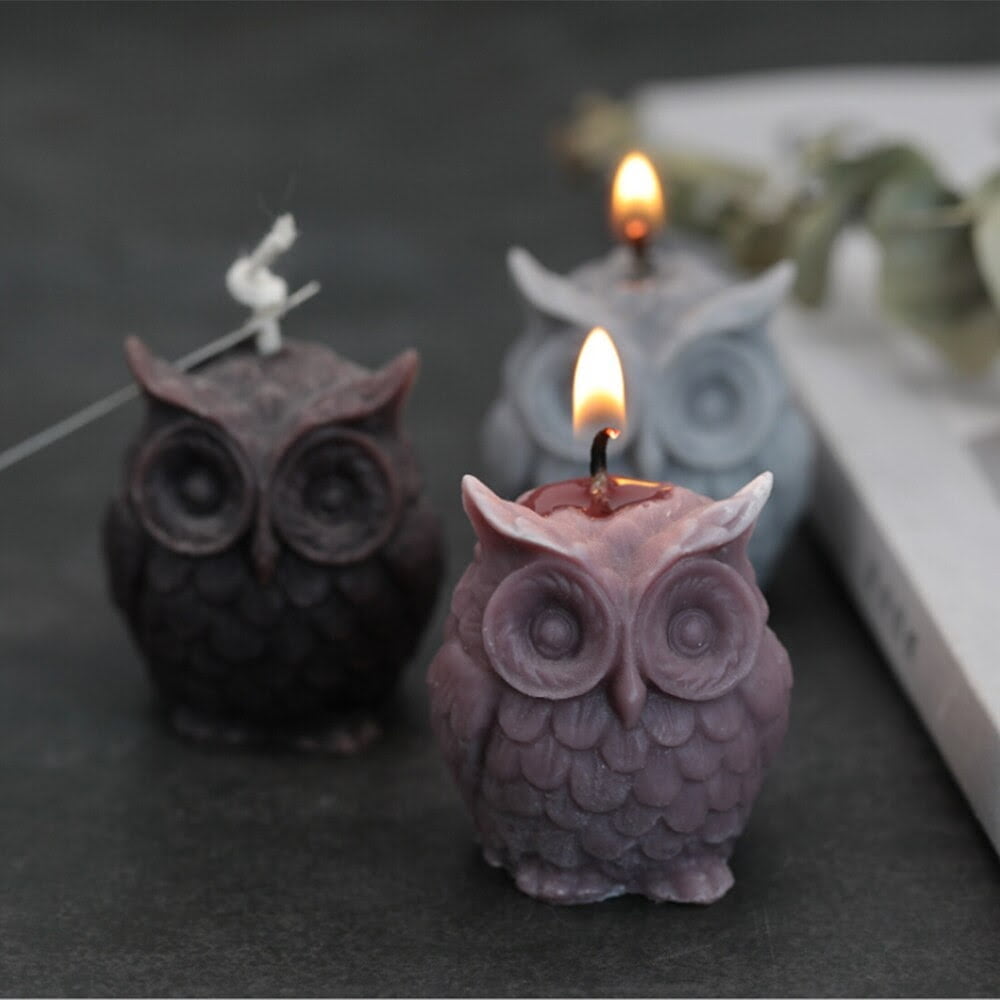Are you looking for a new hobby that is not only creative but also practical? Making wax candles at home is a fun and rewarding activity that allows you to personalize your own scented and colored candles. Whether you’re a beginner or an experienced candle maker, this comprehensive guide will provide you with all the necessary information to get started on creating your own homemade candles.
The art of making wax candles at home has been around for centuries and continues to be a popular craft for individuals looking to add a personal touch to their living space or gift-giving. With the right materials and techniques, you can create stunning and unique candles that are perfect for any occasion, from relaxing spa nights to festive celebrations.
In this article, we will explore the basic materials needed for making wax candles, how to select the right wax for your desired candle, choosing and preparing the perfect candle molds, adding colors and scents, troubleshooting common issues in candle-making, safety precautions, tips and a step-by-step guide. Whether you’re interested in creating simple votive candles or elaborate decorative ones, this introductory guide will set you on the path to successful candle making at home.
The Basic Materials Needed for Making Wax Candles
When it comes to making wax candles at home, there are a few basic materials that you will need to get started. These essential items can be easily found at your local craft store or online, and they are the building blocks for creating beautiful homemade candles.
Wax
The most important material for making wax candles is, of course, the wax itself. There are several types of wax that can be used for candle making, including paraffin, soy, beeswax, and palm wax. Each type of wax has its own unique qualities and advantages, so it’s important to choose the right one for your specific candle making needs.
Wicks
Another crucial material for making candles is the wick. Wicks come in different sizes and materials, such as cotton or wood. The size and type of wick you use will depend on the size and type of candle you are making. It’s important to select the appropriate wick for your candle to ensure that it burns properly and evenly.
Candle Molds or Containers
Depending on the type of candle you want to make, you will also need either candle molds or containers. Candle molds come in various shapes and sizes, allowing you to create traditional pillar candles, tapered candles, or novelty shapes. If you prefer container candles, you’ll need jars or tins to pour your melted wax into.
By gathering these basic materials and learning how to use them effectively, anyone can begin their journey into the world of homemade candle making. Whether you’re a beginner or an experienced crafter looking to expand their skills, having a good understanding of these essential materials is the first step towards creating beautiful and personalized candles at home.
Selecting the Right Wax for Your Candles
When it comes to making wax candles at home, selecting the right wax is crucial to the success of your candle-making endeavors. There are several different types of waxes to choose from, each with its own unique qualities and characteristics that can affect the final outcome of your homemade candles.
Types of Candle Waxes
One of the most common types of waxes used for making candles at home is paraffin wax, which is readily available and relatively inexpensive. Soy wax is another popular choice for homemade candles, as it is derived from natural soybean oil and is biodegradable. Beeswax, known for its natural fragrance and clean-burning properties, is also a favorite among many candle makers.
Considerations for Selecting Wax
When selecting the right wax for your homemade candles, it’s important to consider factors such as melt point, fragrance retention, burn time, and color retention. For example, if you want to add vibrant colors to your candles or incorporate strong scents, you’ll need a wax that can hold these additives effectively without compromising the quality of your candles.
Experimenting With Different Waxes
While each type of wax has its own advantages and limitations, don’t be afraid to experiment with different waxes to find the one that best suits your preferences and candle-making goals. It’s also worth considering blends of different waxes to create custom formulations that offer a balance of desirable characteristics. Ultimately, selecting the right wax will play a key role in the overall success of making wax candles at home.
Choosing and Preparing the Perfect Candle Molds
When it comes to making wax candles at home, choosing the right candle molds is an essential step in the process. There are various types of molds available in the market, including metal, plastic, silicone, and glass molds. Each type of mold has its own advantages and disadvantages, so it’s important to consider the specific requirements of your candle-making project.
Before selecting a mold for your homemade candles, take into account the shape and size of the candles you want to create. Some molds are designed for traditional cylindrical candles, while others may be more suited for unique shapes like hearts, stars, or even animals. Additionally, consider whether you want your candles to have a smooth finish or a textured design as some molds come with intricate patterns and details.
Once you’ve chosen the right candle mold for your project, it’s crucial to prepare it properly before pouring in the wax. Start by cleaning the mold thoroughly to remove any dust or residues that could affect the quality of your candles.
Depending on the type of mold you’re using, you may also need to apply a release agent such as cooking spray or specialized mold release sprays to ensure that the finished candles can be easily removed from the molds without sticking.
Proper preparation and selection of candle molds are essential for creating beautiful and long-lasting homemade candles. By taking the time to choose the right type of mold and preparing it adequately before use, you can ensure that your candle-making experience is successful and enjoyable. With a variety of molds available in different shapes and sizes, you’ll have endless possibilities for creating personalized candles that suit your style and preferences.
Adding Colors and Scents to Your Homemade Candles
One of the most enjoyable parts of making wax candles at home is adding unique colors and scents to your creations. This step allows you to personalize your homemade candles and make them truly one-of-a-kind. Adding colors can create a beautiful visual impact, while scents can transform the ambiance of any room.
When it comes to selecting colors for your homemade candles, there are various options available. You can choose from a wide range of liquid dyes, dye chips, or natural colorants such as spices or herbs. Experimenting with different color combinations can help you achieve the perfect hue for your candles, whether you prefer pastel shades or bold, vibrant tones.
In addition to adding colors, you can also incorporate delightful scents into your homemade candles. There are endless fragrance oils available in the market, ranging from floral and fruity to earthy and exotic. It’s important to carefully follow recommended guidelines for scent concentration to ensure that your candles emit a pleasant aroma without being overpowering.
By combining different scents, you can create unique fragrance blends that cater to your personal preferences. Whether you want a cozy vanilla-scented candle for relaxation or a refreshing citrus-scented one for an uplifting atmosphere, the possibilities for customization are endless when making wax candles at home.
Step-by-Step Guide to Making Wax Candles at Home
If you’ve always wanted to try your hand at making wax candles at home, now is a great time to start. With just a few basic materials and some creativity, you can create beautiful and personalized candles that are perfect for gifting or keeping for yourself. Here’s a step-by-step guide to help you get started on your candle making journey.
1. Prepare your work area: Before you begin, make sure you have a clean and clutter-free workspace to work in. Lay down some old newspapers or a plastic tablecloth to protect your surfaces from any potential spills or messes.
2. Melt the wax: Depending on the type of wax you choose, melting it down can be done using a double boiler or a dedicated wax melter. Be sure to follow the manufacturer’s instructions for the specific type of wax you are working with.
3. Add color and fragrance: Once the wax is melted, it’s time to add any desired colors or scents. You can use specially formulated candle dyes and fragrances that are safe for use in candles. Be sure to mix these in thoroughly before pouring the wax into your prepared molds.
4. Pour the wax into molds: Carefully pour the melted wax into your chosen candle molds. Be sure to leave some space at the top, as the wax may shrink slightly as it cools and solidifies.
5. Let them cool: Allow your candles plenty of time to cool and harden completely before attempting to remove them from their molds. This process may take several hours, depending on the size and type of candles you have made.
By following these steps, you’ll be well on your way to making beautiful homemade candles that are perfect for gift-giving or enjoying in your own home. So gather your materials and get ready to unleash your creativity by making wax candles at home.
Troubleshooting Common Issues in Candle Making
Making wax candles at home can be a fun and rewarding hobby, but it’s not without its challenges. Even experienced candle makers can encounter issues from time to time. Here are some common problems that you may come across when making wax candles at home, along with tips on how to troubleshoot and resolve them:
1. Sinking or Pitting: Sometimes, you may find that your finished candle has sunk in the middle or contains unsightly pits. This can be caused by pouring the wax at too high of a temperature, which creates air pockets as the candle cools. To avoid this issue, always allow your wax to cool slightly before pouring it into your molds.
2. Tunneling: Tunneling refers to the hollow hole that forms down the center of a candle, leaving wasted wax around the edges.
This can happen if the wick is too small for the diameter of the candle or if the candle is not allowed to burn long enough on the first use. To prevent tunneling, make sure to choose a properly sized wick for your candle and allow it to burn until the entire surface melts on each use.
3. Uneven Burning: If your candle burns unevenly, it could be due to an improperly placed wick or drafts in the room where the candle is burning. Make sure to center your wick in the mold and trim it to an appropriate length before lighting. Additionally, try to place your candles away from any drafts that may interfere with their burning.
By addressing these common issues and implementing these troubleshooting tips, you can enhance your experience of making wax candles at home and ensure that your finished products are of high quality. So don’t let these challenges deter you from this creative and fulfilling activity – with a little practice and patience, you’ll soon be creating beautiful homemade candles with ease.
Safety Precautions and Tips for Making Wax Candles at Home
When making wax candles at home, it is important to prioritize safety to prevent accidents and ensure a smooth candle-making process. One of the most crucial safety precautions is to never leave melting wax unattended as it can be a fire hazard.
Always use a double boiler or a dedicated melting pot to melt your wax, never directly on the stove. Additionally, make sure to keep flammable materials away from the heat source and always have a fire extinguisher within reach.
Another important tip for making wax candles at home is to work in a well-ventilated area to avoid inhaling harmful fumes from the melted wax. It’s also advisable to wear gloves when handling hot wax or any chemicals used for coloring and scenting your candles. Furthermore, keep in mind that hot wax can cause serious burns, so handle with caution at all times.
It’s also essential to carefully follow instructions for adding colorants and fragrances to your homemade candles as some materials may be flammable or may change the properties of the wax. Always use caution and refer to reputable sources for guidance on using additives in candle making.
| Safety Precautions | Tips for Candle Making |
|---|---|
| Never leave melting wax unattended | Work in a well-ventilated area |
| Use a double boiler or dedicated melting pot | Wear gloves when handling hot wax |
| Keep flammable materials away from heat source | Refer to reputable sources for guidance on additives |
Decorating and Personalizing Your Homemade Candles
Once you have successfully made your own wax candles at home, the fun part begins – decorating and personalizing them. There are countless ways to make your homemade candles truly unique, whether you are making them for yourself or as gifts for friends and family.
One popular way to decorate your candles is by adding embellishments such as dried flowers, herbs, or small decorative items. These can be adhered to the outside of the candle using craft glue or double-sided tape. Be sure to place them strategically to create a visually appealing design that complements the scent and color of your candle.
Another way to personalize your homemade candles is by creating custom labels or tags. These can include the name of the scent, special messages, or even personalized monograms. You can purchase printable label sheets specifically designed for candle making, or get creative and design your own using specialty paper and markers.
Additionally, experimenting with different types of containers can add a personalized touch to your homemade candles. Consider using vintage teacups, mason jars, or even small tin cans as unique vessels for your candles. Not only will this add a personal touch to your candles, but it also makes for a more sustainable option by upcycling old items into something new and functional.
Conclusion and Resources for Further Candle Making Inspiration
In conclusion, making wax candles at home can be a fun and creative hobby that allows you to customize your own unique candles. By following the step-by-step guide provided in this article, you can easily create beautiful and fragrant candles to enjoy or give as personalized gifts to friends and family. With the right materials, techniques, and safety precautions, anyone can master the art of candle making.
If you’re feeling inspired to continue exploring the world of candle making, there are plenty of resources available to expand your knowledge and skills. From online tutorials and blogs to local classes and workshops, there are endless opportunities to learn new techniques and experiment with different styles of candle making. You can also find inspiration in nature, art, or even your favorite scents when it comes to creating your own unique designs.
Whether you’re a beginner or an experienced candle maker, remember that practice makes perfect. Don’t be discouraged by any common issues or challenges that may arise during the process. With time and dedication, you’ll be able to master the art of making wax candles at home and create stunning creations that bring light and joy into any space.
Frequently Asked Questions
How Do You Make Your Own Wax Candles?
Making your own wax candles is a relatively simple process. First, you’ll need to gather the necessary materials: wax, wicks, a double boiler, fragrance oils (if desired), and a container to mold the candle. Next, melt the wax in the double boiler and add fragrance oils if desired.
Then, secure the wick in the container and carefully pour the melted wax into it. Allow the candle to cool and harden before trimming the wick to the desired length.
Is It Cheaper to Make Your Own Candles?
Making your own candles can be cheaper than buying them, especially if you plan on making them frequently or in large quantities. By purchasing materials in bulk and reusing containers or molds, you can save money compared to store-bought candles. Additionally, you have more control over factors like size, shape, and fragrance when making your own candles.
What Is the Best Wax to Use for Candle Making?
The best wax for candle making largely depends on personal preference and intended use. However, soy wax is a popular choice for beginners due to its ease of use and clean-burning properties. Beeswax is another natural option known for its pleasant honey-like aroma and long burning time.
Paraffin wax is commonly used due to its affordability and ability to hold color well when using dyes. Ultimately, the best wax for candle making will vary depending on individual needs and preferences.

Welcome to my candle making blog! In this blog, I will be sharing my tips and tricks for making candles. I will also be sharing some of my favorite recipes.





